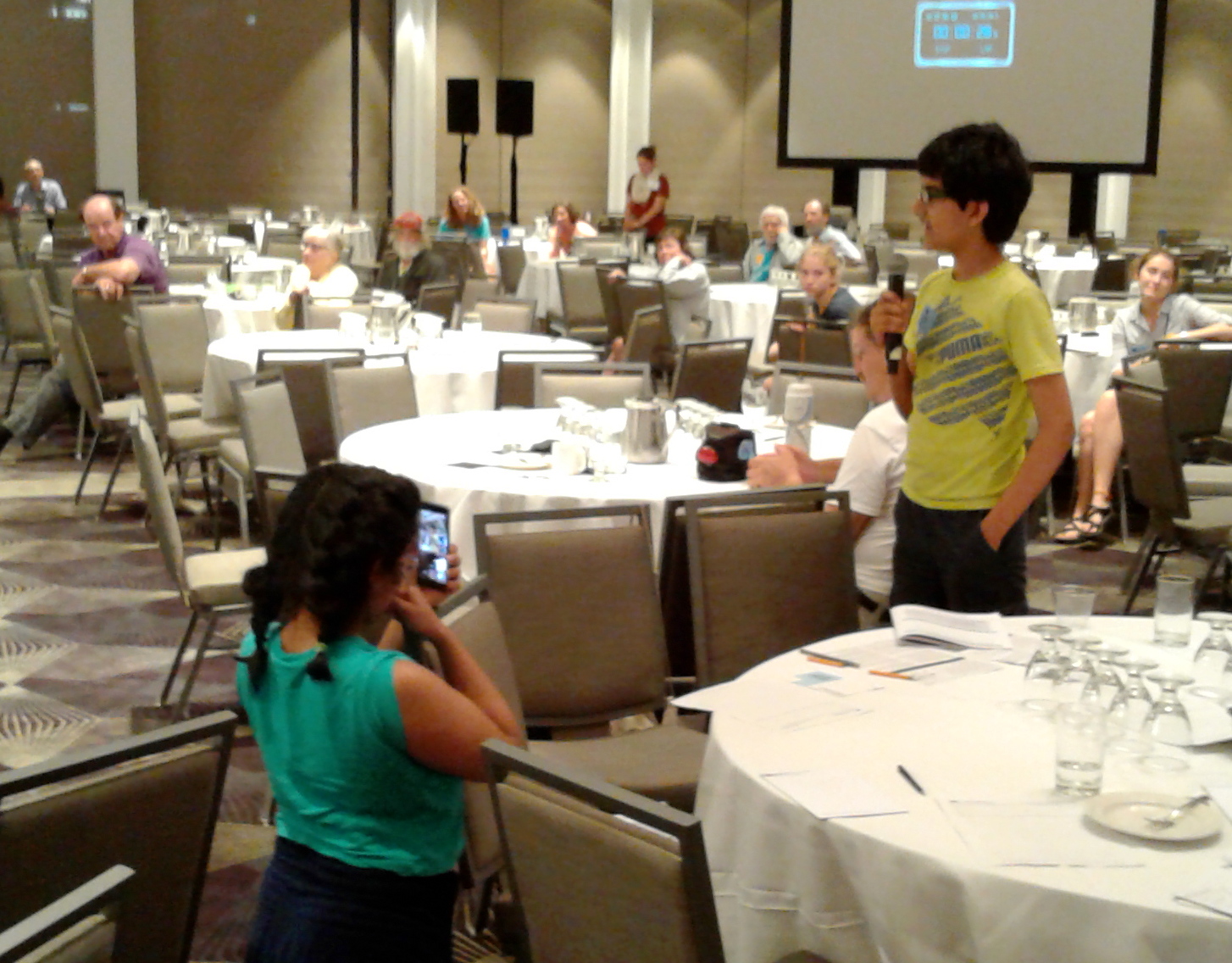
By Scott Russell
If the public hearing on the Line 3 tar sands in St. Paul Tuesday is any bellwether, the project should be stopped – just like Sandpiper. The overwhelming majority of attendees spoke against the Line 3 plan, which threatens the Mississippi headwaters region and many clean lakes and rivers in northern Minnesota.
More than 350 people packed a large hall at St. Paul’s Intercontinental Hotel. More than 80 percent of speaker s opposed the project and criticized the draft Environmental Impact Statement (DEIS) under discussion. The Minnesota Department of Commerce, the lead agency on the DEIS, had allotted two hours for comment. So many people wanted to speak they added an extra half hour to the event and still didn’t get through the list of people who wanted to speak.
Sierra Club volunteer Jean Ross was one of nearly 50 people who did get the microphone. She asked the Department of Commerce tough questions about why the Minnesota Department of Natural Resources (DNR) and the Minnesota Pollution Control Agency (MPCA) didn’t have a stronger voice in decisions about Enbridge’s proposed Line 3 pipeline expansion. Ross said the DEIS fell short because it did not include a “no-build” option. “Be part of the future, not part of the past,” she said.
Those who didn’t get called on to speak, such as Sierra Club intern Laura Huepenbecker, had the opportunity to give their comments in a one-on-one with a court reporter. “Minnesota has no need for this pipeline,” she said. “We already are importing more than we need to meet our demand.”
This was one of nearly two dozen public hearings around the state to get public comment on the Line 3 DEIS. This was the only public hearing in the Twin Cities. The others will be in northern Minnesota along the proposed pipeline route.
Enbridge’s existing Line 3 tar sands pipeline is old and failing. It proposes to abandon it in the ground and install a larger pipeline along a new route. The new route threatens the Mississippi headwaters, prime wild rice lakes, and violates Anishinaabe treaty rights.
The Minnesota Public Utilities Commission (PUC) will make the final decision on approving the pipeline. The final EIS will play a significant role in its decision.

Speakers ranged for seasoned advocates to first-timers. Minnesota State Rep. Frank Hornstein criticized the DEIS for not talking enough about global climate change. Tar sands oil created 17 percent more carbon pollution than traditional oil supplies: “Look broader at climate impacts,” he said. “Redo it [the DEIS].” Those comments were echoed by one of the last speakers, 13-year old Anvaya Ajay. His generation would feel the full impact of the pipeline, he said. The DEIS did not account for the full impact of the carbon pollution that Line 3 would help create.
Fewer than 20 percent of the speakers spoke in support of the project: two were either Enbridge consultants, one a lobbyistfrom the Minnesota Chamber of Commerce, and several workers who hoped to get jobs from the pipeline. Some argued that we would still need oil in the future. But they didn’t take into account that Minnesota’s fossil fuel consumption has been on the decline for more than a decade. They didn’t mention that increasing crude oil imports from Canada does not improve our energy security, only corporate profits. The United States already is a net exporter of gasoline.
Pipeline opponents raised many criticisms of the project and the DEIS. Many comments focused on the abandonment of Line 3. Some wanted a separate EIS just on abandonment. Speakers said the Enbridge should not be allowed to put forward a proposal for a new Line 3 until it cleaned up the old Line 3. Other comments included:
- The DEIS only analyzes impacts for 30 years out – and the pipeline is expected to be around longer than that. The DEIS doesn’t take into account the rights of future generations.
- There is no accountability if Enbridge eventually walks away from the new pipeline or ceases as a business.
- Enbridge won’t release the chemical composition of the tar sands slurry, claiming trade secrets. That means we don’t what could spill into our waters.
- There is no funding source for all the social and environmental costs of the project.
Allen Richardson, an organizer for Minnesotans for a Pipeline Clean-up, offered a “win-win” to laborers. The DEIS estimated it would cost Enbridge $1.28 billion to remove the existing and failing Line 3 and restore the land, he said. He asked laborers to throw their lot in with landowners affected by the current Line 3. “It sounds like a great jobs program to me,” he said.

There is still time to make your comment in writing by using our template here or directly to the Dept of Commerce by emailing Pipeline.Comments@state.mn.us. Include the docket numbers, CN-14-916 and PPL-15-137, in your comments when emailing them in directly.